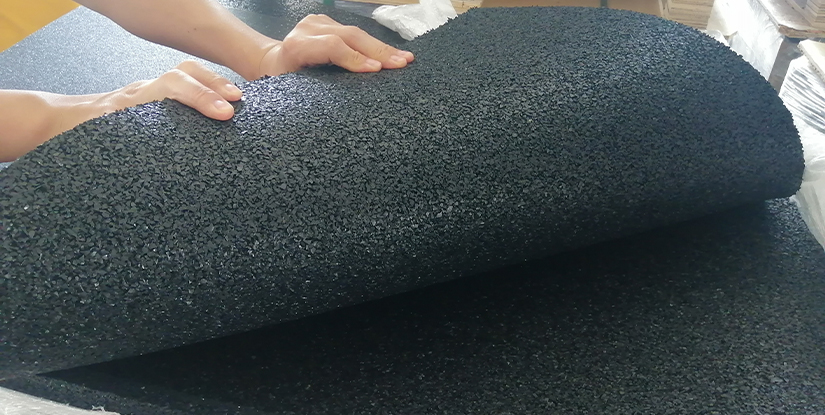Outdoor Training Mat - Durable, Waterproof & Non-Slip Fitness Mats

Outdoor Training Mat: Performance and Practicality
An outdoor training mat is an essential piece of fitness equipment for athletes, trainers, and active individuals who want reliable performance outdoors. Designed to withstand varied surfaces, weather exposure, and intensive use, a quality mat extends workout options beyond the studio. This guide provides actionable guidance on materials, selection criteria, maintenance, safety, practical use cases, and sustainable choices so you can make a professional purchase decision.
Key Benefits of an Outdoor Training Mat
- Durability: Engineered to resist abrasion, UV exposure, and moisture to maintain performance outdoors.
- Traction and Stability: Non-slip surfaces and secure backing allow dynamic movements on grass, concrete, or synthetic turf.
- Portability: Lightweight construction and integrated carry solutions make transportation and storage simple.
- Hygiene: Materials that resist mold, mildew, and odor improve cleanliness during repeated outdoor use.
- Protective Cushioning: Adequate shock absorption protects joints during plyometrics, calisthenics, and stretching.
Materials and Construction
Understanding construction helps match a mat to intended use. Common materials include EVA foam, closed-cell NBR foam, thermoplastic elastomers (TPE), and reinforced PVC. Closed-cell foams are water-resistant and fast-drying—ideal for outdoor conditions. TPE offers a balance of cushioning and eco-friendly recyclability. Reinforced PVC or rubberized layers add abrasion resistance and weight for stability on uneven ground.
Choosing the Right Mat: Practical Criteria
- Thickness: 4–10 mm for core stability and ground contact training; 10–15 mm for added joint protection during high-impact work.
- Density: Higher density resists compression and offers longer-term support; lower density feels softer but may degrade faster outdoors.
- Size and Shape: Standard full-length mats suit yoga and bodyweight circuits; larger, modular, or foldable mats benefit group training or plyometric zones.
- Surface Texture: Micro-textured or patterned top layers improve grip when wet or when hands and feet sweat.
- Backing: A non-slip or weighted backing prevents sliding on slopes, turf, or hardpack surfaces.
- Weather Resistance: UV-stabilized coatings and closed-cell constructions prevent degradation from sun and moisture.
Portability and Storage
Portability features matter for coaches and mobile trainers. Look for mats with carry straps, quick-fold designs, low weight per square meter, and compact roll diameters. For storage, choose mats that resist permanent compression and maintain shape after being rolled for extended periods. Waterproof covers or breathable storage bags protect mats between sessions without trapping moisture.
Care, Cleaning, and Longevity
- Cleaning: Rinse rigid debris, then wipe with mild detergent and water. Avoid harsh solvents that can break down materials.
- Drying: Air dry fully before storage to prevent mold—closed-cell foams dry faster than open-cell alternatives.
- Inspection: Regularly check seams, textured surfaces, and edges for wear or delamination.
- Repairs: Small tears can be patched with appropriate adhesive; replace mats showing compressive failure or chronic surface breakdown.
Safety and Best Practices
Use the mat on as flat a surface as possible and secure edges to avoid tripping. Combine the mat with appropriate footwear for high-impact activities or use barefoot for mobility and yoga sessions. Replace mats that have lost resiliency to reduce injury risk. For group training, ensure mats are spaced to prevent equipment collision and provide clear walkways.
Sustainability and Eco Options
Eco-conscious buyers should seek mats made from recyclable TPE, natural rubber with sustainable sourcing certifications, or closed-cell foams with low-VOC manufacturing. Check whether the manufacturer offers end-of-life recycling or take-back programs, and prefer products with minimal packaging and transparent supply chains.
Use Cases and Recommendations
- Personal Training: Lightweight roll-up mats with carry straps—balance of comfort and portability.
- Group Bootcamps: Heavy-duty, modular mats or larger polyethylene options for repeated heavy use and equipment placement.
- Yoga/Pilates Outdoors: Thin, high-grip mats with textured surfaces to maintain poses even when damp.
- Cross-Training and Plyometrics: Thicker, high-density materials to absorb shock and avoid bottoming out.
Conclusion
Selecting the right outdoor training mat requires balancing durability, comfort, traction, and portability based on intended activities. Prioritize weather resistance and material quality to extend service life and maintain safe performance. Regular maintenance and informed purchasing decisions ensure your mat remains a reliable foundation for outdoor training.
FAQs
- Q: What thickness is best for outdoor workouts? A: 6–12 mm is a versatile range; thicker for high-impact sessions.
- Q: Are outdoor mats waterproof? A: Look for closed-cell or treated materials—fully waterproof options exist.
- Q: How do I clean an outdoor mat? A: Remove debris, wipe with mild soap and water, then air dry thoroughly.
- Q: Can I use a yoga mat outdoors? A: Yes, if it has good grip and is designed for outdoor exposure.
- Q: How long do outdoor mats last? A: Lifespan varies—quality mats last several years with proper care.
- Q: Are eco-friendly outdoor mats effective? A: Yes—TPE and responsibly sourced natural rubber offer performance with lower environmental impact.
- Q: Should I leave my mat in the sun? A: Avoid prolonged direct sun to reduce UV degradation; use UV-stabilized mats if necessary.
- Q: Can I repair a torn mat? A: Small tears can be patched; severe damage typically requires replacement.
- Q: What is the best mat for bootcamps? A: Heavy-duty, higher-density, or modular mats designed for repeated equipment impact are ideal.

